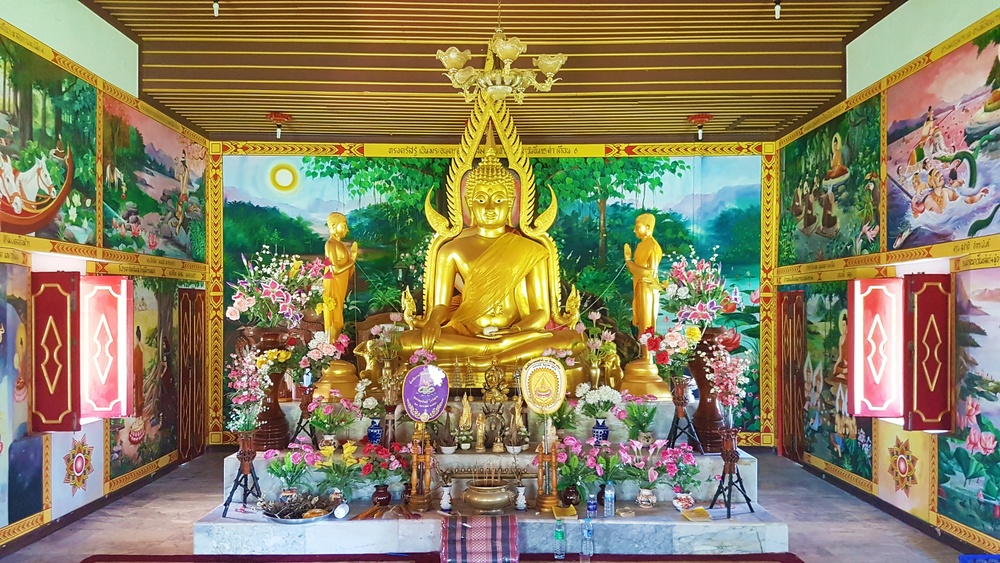India, the land where Lord Buddha attained enlightenment and shared his teachings, holds an unparalleled spiritual significance for Buddhists around the globe. As the cradle of Buddhism, it is dotted with ancient monasteries that have witnessed centuries of devotion, meditation, and learning. These sanctuaries, known for their spiritual depth, serene settings, and sacred architecture, continue to draw pilgrims and seekers from every corner of the world. This guide takes you through the most revered Buddhist monasteries in India, helping you plan a spiritual journey steeped in history, peace, and enlightenment.
Why Visit Buddhist Monasteries in India?
Visiting Buddhist monasteries in India is not just about tourism; it’s a pilgrimage into silence, simplicity, and spiritual discovery. Whether you’re looking to reconnect with yourself, understand Buddhist philosophy, or explore rich cultural heritage, these monasteries offer a transformative experience. Many of them are active centers of learning and meditation, where you can interact with monks, witness rituals, and even participate in short-term retreats.
1. Mahabodhi Temple Complex, Bodh Gaya, Bihar
No pilgrimage is complete without a visit to Bodh Gaya—the place where Prince Siddhartha became the Buddha under the Bodhi Tree. While not a monastery in the traditional sense, the Mahabodhi Temple is the holiest site for Buddhists. The surrounding area is filled with monasteries built by Buddhist communities from countries like Japan, Thailand, Bhutan, and Sri Lanka, each reflecting unique cultural traditions. Walking the serene paths here, one can feel the deep spiritual vibrations of enlightenment.
2. Tawang Monastery, Arunachal Pradesh
Tawang Monastery is the largest in India and the second-largest in the world. Perched at 10,000 feet in Arunachal Pradesh, this 17th-century monastery belongs to the Gelugpa sect of Mahayana Buddhism. It is home to over 400 monks and features a massive statue of Lord Buddha, an impressive library, and beautiful murals. Pilgrims are drawn to its divine energy, breathtaking views, and annual religious festivals that celebrate Buddhist teachings and culture.
3. Hemis Monastery, Ladakh
One of the most famous Buddhist monasteries in India, Hemis is renowned for its spiritual importance and vibrant cultural celebrations. Located near Leh, it belongs to the Drukpa lineage and houses invaluable relics and sacred texts. The Hemis Festival, held annually, commemorates the birth of Guru Padmasambhava and showcases traditional mask dances. For pilgrims, Hemis offers both religious immersion and scenic tranquility.
4. Rumtek Monastery, Sikkim
Rumtek Monastery is the seat of the Karmapa, head of the Karma Kagyu lineage. Located near Gangtok, Sikkim, it is among the most sacred Buddhist sites in India. Known for its golden stupa and beautiful Tibetan architecture, Rumtek attracts thousands of pilgrims each year. The monastery also serves as a hub of learning, with monks engaged in deep study and meditation. Visitors often come here to attend teachings and participate in rituals.
5. Namdroling Monastery, Karnataka
Situated in Bylakuppe, Namdroling Monastery is a vibrant center of the Nyingma tradition of Tibetan Buddhism. It is often referred to as the “Golden Temple” for its magnificent gold-plated statues and intricate interiors. As a pilgrimage site, it offers spiritual teachings, chanting sessions, and opportunities for visitors to witness the monastic way of life. The monastery houses over 5,000 monks and nuns and stands as a shining example of devotion in South India.
6. Key Monastery, Spiti Valley, Himachal Pradesh
Remote and rugged, Key Monastery is a haven for spiritual seekers. Located at 13,668 feet above sea level, it is one of the oldest and most picturesque Buddhist monasteries in India. This millennium-old gompa is an active monastic training center and stores a vast collection of scriptures and murals. Pilgrims who brave the high-altitude terrain are rewarded with profound silence, panoramic views, and authentic Buddhist practices.
7. Thiksey Monastery, Ladakh
Built on a hilltop and resembling the Potala Palace in Lhasa, Thiksey Monastery is a stunning spiritual site near Leh. It belongs to the Gelugpa order and features a 15-meter-high statue of Maitreya Buddha. For pilgrims, the early morning prayers, the gentle ringing of bells, and the sight of monks in crimson robes create a deeply moving spiritual experience.
8. Ghoom Monastery, Darjeeling, West Bengal
Ghoom Monastery, officially known as Yiga Choeling, is one of the oldest Tibetan Buddhist monasteries in the Eastern Himalayas. It houses a majestic statue of Maitreya Buddha and ancient Tibetan scriptures. Located in the misty hills of Darjeeling, it offers a peaceful retreat for pilgrims who wish to meditate or simply soak in the spiritual atmosphere of the mountains.
Tips for Pilgrims
- Dress Modestly: Respect local customs by wearing modest and comfortable clothing.
- Observe Silence: Many monasteries require silence or minimal conversation in prayer halls.
- Participate Respectfully: If attending rituals or ceremonies, observe quietly and follow guidance.
- Plan Accordingly: Some monasteries are in high-altitude or remote locations, so plan travel and accommodations in advance.
- Learn and Reflect: Take the time to understand the basic principles of Buddhism to enrich your pilgrimage.
Conclusion
For those seeking a path of peace, introspection, and spiritual awakening, visiting the revered Buddhist monasteries in India offers a deeply enriching experience. These sacred spaces, shaped by centuries of devotion and cultural continuity, invite pilgrims to step away from the chaos of modern life and into a world of inner stillness and universal wisdom. Whether you’re beginning your spiritual journey or continuing a lifelong quest, these monasteries provide not just a destination—but a profound inner pilgrimage.

